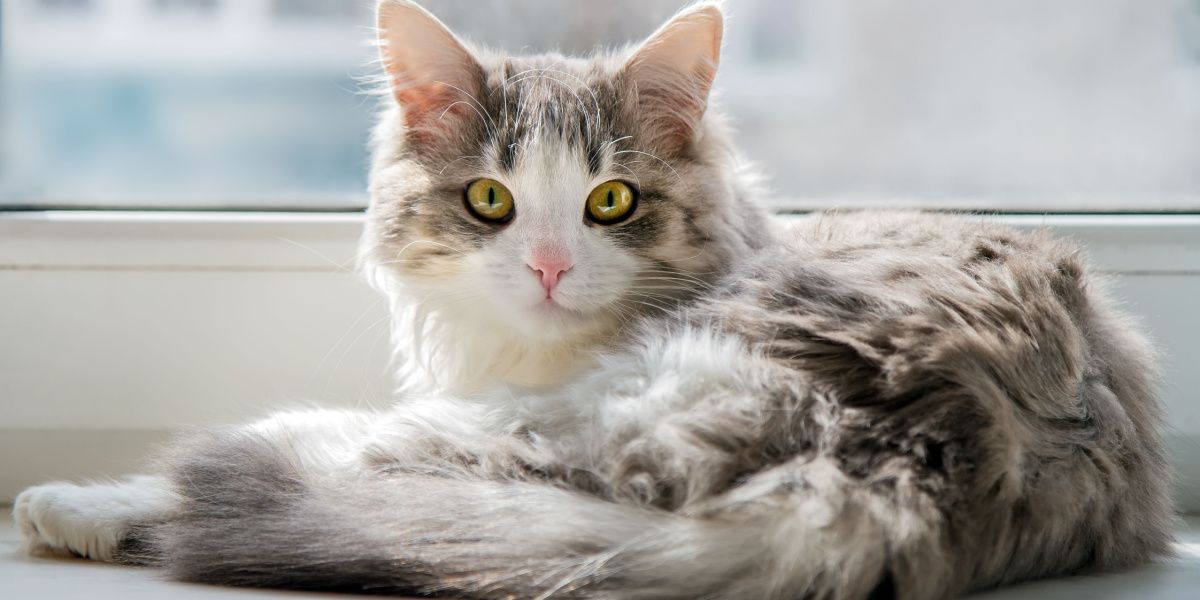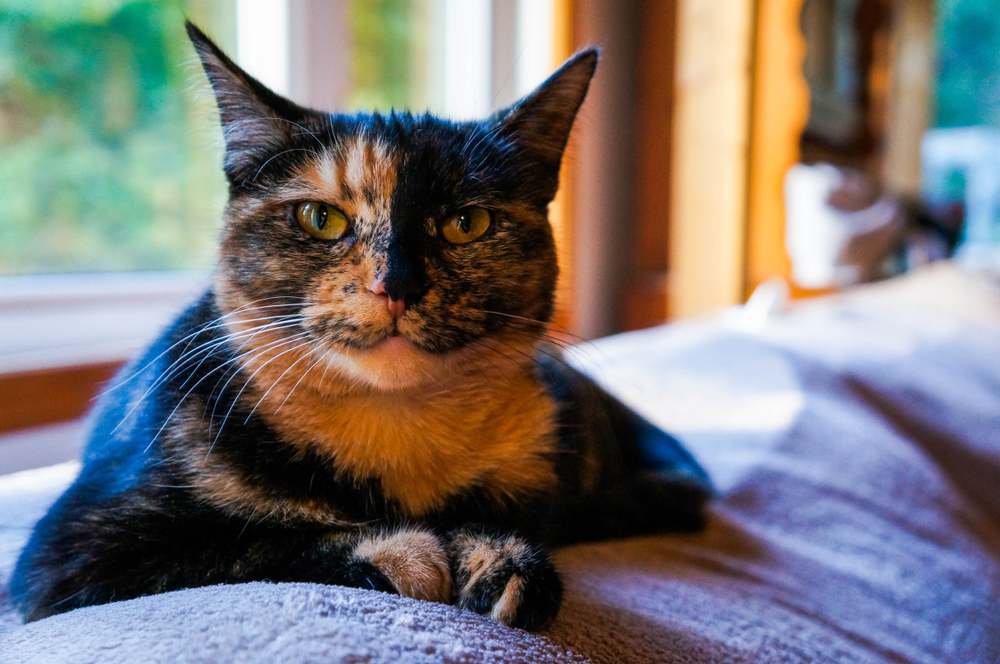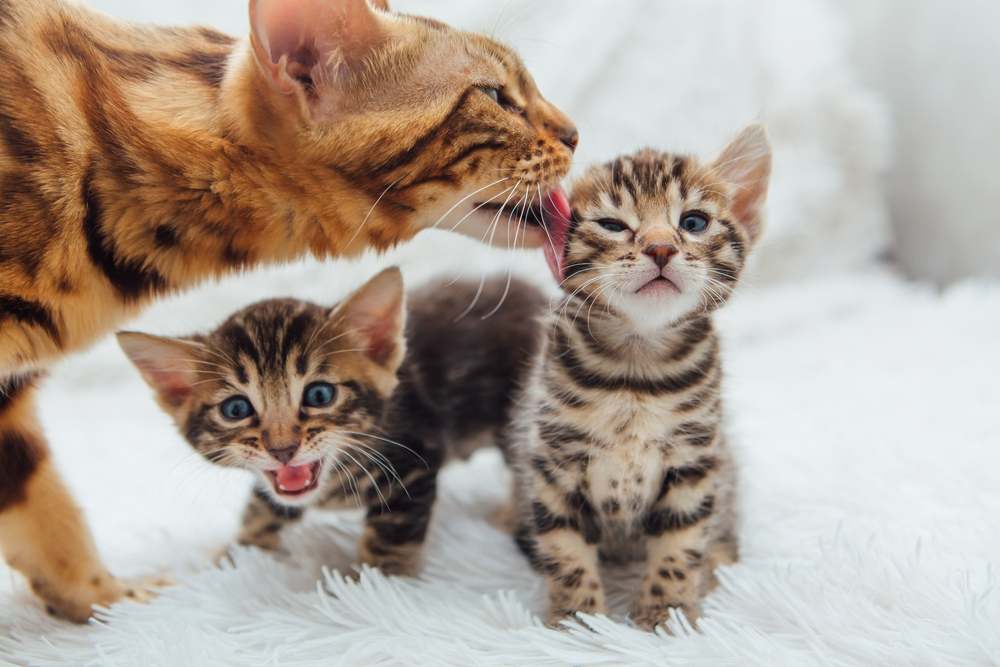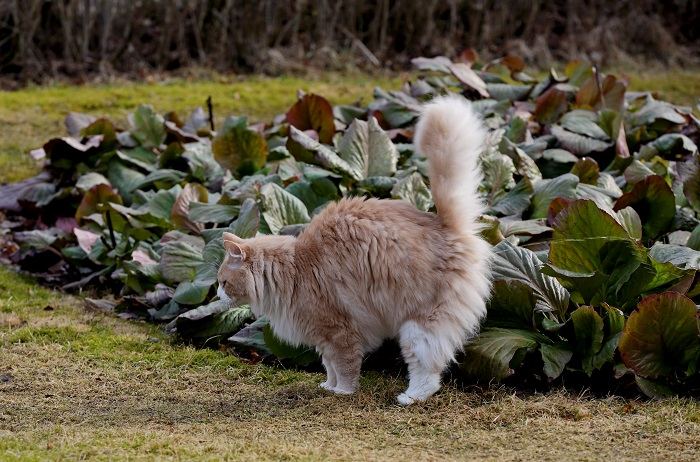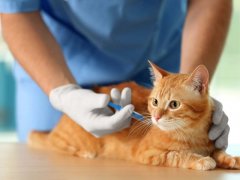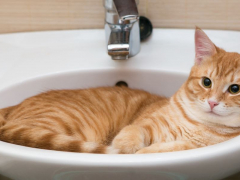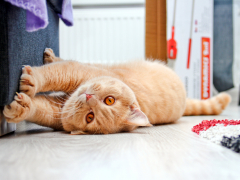Male and female cats share many characteristics, but female cats have some unique temperament traits and physical differences.
If you are a cat lover with both male and female cats, you might have compared them and noticed some differences in your female cat’s personality, behavior, physical appearance, and more. Read on for 15 fascinating facts about female cats.
1. Female Cats Live Longer Than Male Cats
One study found that the average life span of female cats was 15 years, which was two years longer than male cats (which live on average 13 years). This longer life expectancy might be due to the fact that female cats are less inclined to have wanderlust in search of potential mates.
Roaming outdoors puts cats into more dangerous situations where they might be hit by cars, or attacked by dogs or wildlife. Cats that spend a lot of time outside are also more exposed to deadly diseases like feline leukemia, feline infectious peritonitis, and rabies. Female pet cats that were spayed had even greater longevity, living an additional 0.6 years on average compared to unspayed female cats.
2. Female Cats Are More Likely To Be Right-Pawed
Like humans are right-handed or left-handed, cats can show paw preference and be right-pawed or left-pawed. Although almost all humans (99%) have a strong preference for being right-handed or left-handed, fewer cats have a preference for dominant paws. About 75% of cats use one paw more than the other, according to one study.
Just over half of female cats (52%) prefer using their right paw. Similarly, 52.3% of male cats prefer using their left paw.
3. Female Orange Tabby Cats Are Rare
If you see an orange or ginger cat, it is unlikely to be female. This is because the genes responsible for coat color are sex-linked. The gene responsible for orange cats is carried by the X chromosome. Females always have two X chromosomes (XX); males always have one X and one Y (XY). To be orange, a female cat must have the genes for orange in both X chromosomes.
The black gene is more common in cats than the orange gene, so it’s rare for females to inherit the two orange genes they need to be orange. About 80% of all orange tabby cats are male because they only need one orange X gene to be orange.
4. Almost All Calico Cats and Tortoiseshell Cats Are Female
Calico and tortoiseshell color patterns are almost exclusive to female cats. The same orange/black color genetics come into play. In order to be calico or tortoiseshell, a cat must have two X chromosomes (XX), each carrying the different alleles needed to create the calico or tortoiseshell color pattern. Since two XX chromosomes always make a cat female, these color patterns are strictly seen in females.
A male cat can only be a calico or torti if he is born with an extra X chromosome, which causes a rare condition called Klinefelter’s syndrome. This cat would have three chromosomes: XXY.
5. Unspayed Female Cats Are Called Queens
Just as unneutered male cats are known as tomcats, female cats have a few different nicknames based on their breeding status. Intact females of breeding age are called queens. In cats, the process of giving birth is called queening. In some parts of the world, a spayed female cat is called a “molly.”
6. Female Cats Can Become Pregnant at 4 Months
Female kittens can sometimes reach sexual maturity and become pregnant young—by 16 weeks of age. However, it’s more common for puberty to end and the first estrus (heat cycle) to occur around 6 months of age. In order to prevent unwanted pregnancy, early spaying is recommended at 4 to 6 months of age.
7. Female Cats Can Become Pregnant Any Time of Year
Although spring and summer are the major breeding seasons, female cats can become pregnant at almost any time of year. The most common months for cats to become pregnant are February through October. Cats can also become pregnant in the winter months in some parts of the world where there are more hours of sunlight during these months.
8. Female Cats Go into Heat Two to Three Times Per Year
Cats are seasonally polyestrous, which means they can go into heat (called estrus) multiple times within a breeding season. Female cats that go into heat but do not become pregnant will typically go into heat again within a few months.
9. Female Cats Are Induced Ovluators
Female cats do not ovulate unless they are mated by a male. This is called induced ovulation. Breeding causes female cats to ovulate, making the chances of pregnancy very high. They usually need to mate several times during their estrus before they ovulate. Multiple breedings over several days generally results in pregnancy.
10. Female Cats Can Have Kittens from More than One Father
It’s common for female cats to mate multiple times when they are in heat, and not always with just one male cat. If a female cat is mated by more than one male with a short window of time, she can become pregnant with a litter of kittens from multiple fathers (called superfecundation).
11. Female Cats Sometimes Have Phantom Pregnancies
A condition called false pregnancy or pseudopregnancy occurs when a cat’s body responds as if she is pregnant when she is not. False pregnancy can sometimes occur if a female cat is induced to ovulate through mating but does not become pregnant. Cats experiencing pseudopregnancy might display behavioral changes and physical changes, such as a swollen belly or milk production from the mammary glands.
False pregnancy usually resolves on its own in one to three weeks. Spaying is recommended for cats that experience repeated episodes of pseudopregnancy.
12. A Female Cat’s Pregnancy Lasts About Two Months
Unlike humans, who are pregnant for about nine months, cat pregnancy is much shorter, lasting between 60 to 65 days. Physical signs of pregnancy can usually be noticed by the time a cat is three weeks pregnant. Signs that your female cat might be pregnant include increased appetite, sudden weight gain (especially in the belly), swollen and pink nipples, and behavioral changes.
13. Female Cats Can Urine-Spray
Although urine marking is commonly associated with male cats, female cats spray urine as well. This normal feline behavior can be problematic for house cats when they spray urine indoors. Urine spraying involves a standing cat depositing urine on vertical surfaces like walls, couches, trees, etc.
Urine spraying is related to territory marking and mating behavior, but some cats will spray urine if they are stressed or unwell. If your female cat is spraying urine and your vet cannot find a medical reason for it, the first step is to have your cat spayed. Other solutions include removing stressors in the home and using calming pheromones.
14. Unspayed Female Cats Are at Risk of Pyometra
Pyometra is an infection of the lining of the uterus that is triggered by hormonal changes. Although pyometra is sometimes seen in younger unspayed cats, it most often afflicts older, unspayed cats. Pyometra is a life-threatening infection that can progress rapidly.
Signs of pyometra include fever, lethargy, not eating, an enlarged abdomen, and a pus-like discharge from the vagina. If you notice any of these symptoms in your unspayed female cat, bring her to a veterinarian without delay.
15. It’s More Expensive to Spay Female Cats
Neutering male cats is relatively quick and easy because the veterinarian does not have to enter the body cavity to remove the testicles. Conversely, the spay surgery for female cats is a more invasive abdominal surgery. It requires more anesthesia, surgical tools, and time, so it usually costs more than a neuter surgery for a male cat.
Spaying your female cat can reduce behavioral issues like urine spraying, eliminates the chance of uterine cancer, and lowers the risk of other hormonally linked diseases.
